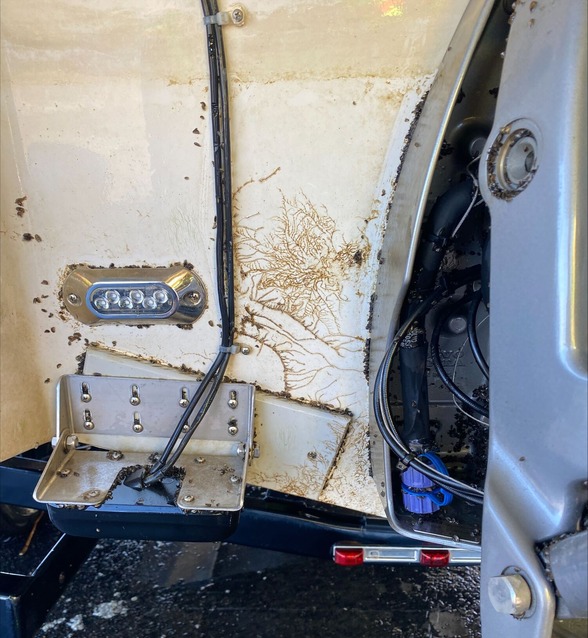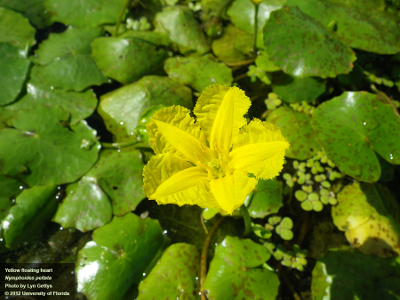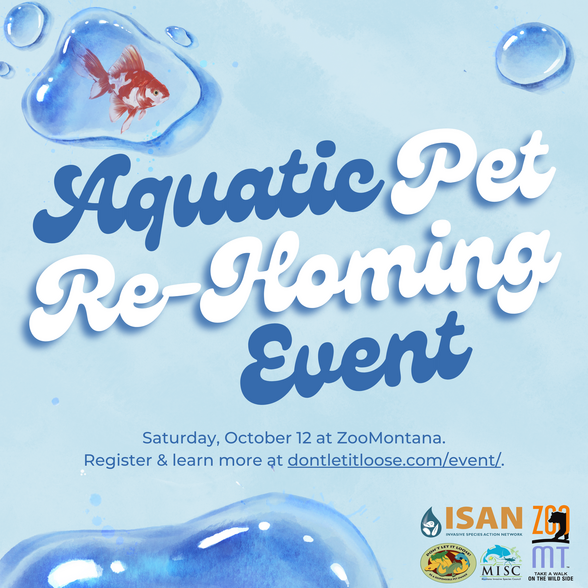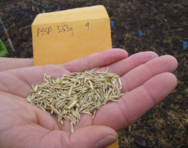|
 The Montana Invasive Species Council is hosting the Montana Invasive Species Summit on November 14 at the Delta Hotel in Helena.
This biennial conference brings together agencies, partners and stakeholders to discuss invasive species issues and identify areas to improve invasive species management.
Registration is open for individuals and vendors to attend the Montana Invasive Species Summit. Consider attending these meetings held at the same location:
- November 12 - MISC Quarterly meeting
- November 13 - Fish, Wildlife & Parks AIS conference
|
|

Small number of Quagga mussels detected in the Snake River
9/24/24-Boise, Idaho - The Idaho State Department of Agriculture (ISDA) announced today the detection of a small number of quagga mussels in the Twin Falls area of the Snake River.
Quagga mussels were first identified in the Twin Falls area in September 2023. Working with a broad group of partners, the ISDA rapidly implemented a treatment plan which includes extensive on-going monitoring.
“We have a strong invasive species program in place to monitor our waterways for quagga mussels, and we are prepared to respond with a treatment plan with minimal impacts to the public. While we never want to see confirmation of quagga mussels, we know that pest eradication is rarely ‘one and done.’ Since the first detection in 2023, ISDA has conducted more water sampling, ran more inspections stations, increased statewide communications, added manpower, and worked with more partners. We have made significant progress, and now we must focus on the next phase of eradication. ISDA and the many partners who have helped in countless ways will continue to push for full eradication. We know this next phase is pivotal,” ISDA Director Chanel Tewalt said.
In 2023, the ISDA implemented a treatment of the river with a chelated copper product. It was the first treatment of this type and scale ever attempted in North America. Sampling results indicate the chelated copper treatment was effective in reducing the mussel population.
Since 2023, ISDA has taken nearly 300 samples in the affected stretch of river and over 3,000 samples statewide throughout the 2024 season, doubling routine monitoring samples for the year. Current sample results show a decreased quagga mussel presence in the affected stretch of river compared to the pre-treatment survey in 2023.
Recent positive detection locations include in the Shoshone Falls pool, Pillar Falls and the Twin Falls Reservoir behind Twin Falls hydroelectric facility. Quagga mussel reproduction is more active in warmer water temperatures, making late summer the most likely time to detect the mussels in the Snake River.
ISDA is planning another strategic treatment for the affected stretch of river. Through extensive surveying this year – double the amount Idaho has ever conducted – the agency has even more information taking on the infestation this year.
ISDA does not expect major impacts to the public. Access to the Snake River at Centennial Park remains open with mandatory inspection and decontamination for all watercraft. Pillar Falls to Twin Falls Dam remains closed. An additional temporary closure from Pillar Falls to Auger Falls will take place in mid-October for approximately 15 days to facilitate a treatment. Visit idaho.gov/quagga for closure updates.
|
 Watercraft Inspection:
- Watercraft inspection stations continue to operate through the Fall at high-risk locations.
- Over 95,000 watercraft have been inspected so far this season with 42 mussel fouled vessels intercepted to date and over 500 with aquatic weeds.
-
18 of the 42 mussel fouled vessels were destined for Montana.
- The top in-state destinations for those vessels: 11 destined for the Flathead area, 4 going to Fort Peck and the others were going to Missoula, Three Forks and Bozeman.
-
South Dakota Game and Fish (SDGF) recently requested assistance from FWP staff to help with watercraft inspection and decontamination at Pactola Reservoir outside of Rapid City. Over the past two weeks FWP staff assisted SD staff with decontamination of over 200 watercraft exiting the reservoir. Boats had thousands of attached zebra mussels (see photo below). Thank you to SDGF for requesting help and thank you to FWP staff Carley Chapman, Jim Vojahsky, Andrew Rivers and Zach Crete for helping to address the movement of zebra mussels out of Pactola Reservoir.
-
The watercraft inspection dashboard is a good resource to see what is going on at each watercraft inspection station.
-
More information on watercraft inspection station operations can be found here: Watercraft Inspection Info
 |
Pactola Boat
Early Detection
-
Over 2,000 early detection mussel veliger microscopy samples have been analyzed so far this season with no invasive mussel larvae detected in Montana samples. Over 200 eDNA samples have also been analyzed for dreissenid mussel early detection with no detection of mussel DNA.
-
Eradication project updates:
-
Beaver Lake Eurasian Watermilfoil Eradication Project (Whitefish): 7 plants found and removed this season. Surveys will continuing in 2025.
-
Nilan Reservoir Eurasian watermilfoil Eradication Project (Augusta): 1 plant found and removed this season. Surveys will continue in 2025.
- Lake Elmo Corbicula Clam Eradication Project (Billings): No evidence of invasive clams was found this season. Survey will continue in 2025.
- FWP works closely with the Montana Natural Heritage Program (MNHP) on data sharing and AIS early detection reporting. MNHP has passed along multiple public reports of suspected invasive species through direct reports and observations on iNaturalist this season. This has led to the identification and verification of several new AIS populations in the state. This is exactly what we want to see with the public keeping an eye out and reporting suspected invasive species. MNHP provides a great resource to support AIS early detection and reporting. Montana Field Guide.
-
New AIS detections this year in Montana include:
- New Zealand mudsnails in Silver Bow Creek in Butte.
- New Zealand mudsnails detected in Pioneer Park in Billings.
- Curlyleaf pondweed in Ross Creek in the upper Judith River.
- Yellow Floating Heart in a private pond in Bozeman. First record in the State (see photo below).
 |
Yellow Floating Heart
Don't Let it Loose: Aquatic Pet Rehoming Event at ZooMontana
Encouraging responsible pet ownership through aquatic pet rehoming Saturday, October 12, 2024.
Billings, Montana – Do you have a pet that you are no longer able to care for? Don't Let It Loose into the wild! Since pets rely on their human companions to care for them, many unwanted pets released into the wild do not survive. They struggle to find food and shelter, are often an easy meal for other creatures, and many ultimately suffer. On the other hand, if your pet survives, it could become an invasive species. Invasive species outcompete native wildlife for food and shelter, and aquarium pets are notorious for spreading diseases in areas where they have been released. Not only can invasive species cause irreversible harm to the environment, but they can also disrupt local economies and infrastructure. It’s a lose-lose and never the right thing to do!
Instead, you can surrender your pet at the Aquatic Pet Rehoming Event hosted by Invasive Species Action Network (ISAN) and ZooMontana. The event will take place at ZooMontana’s outdoor pavilion in Billings on Saturday, October 12 from 10:00am – 3:00pm. At this event, our partner organizations will be accepting fish, turtles, frogs, aquatic plants, and other aquatic pets for rehoming. Non-aquatic species, venomous animals, waterfowl, or domestic pets, such as dogs, cats, rabbits, pigs, birds, and chickens will not be accepted at this event. Staff will also be available to discuss prohibited species, rehoming options, and the impacts of invasive species.
“Responsible pet ownership extends beyond the initial acquisition of an animal and includes making difficult decisions when circumstances change,” says Jeff Ewelt, Executive Director of ZooMontana. “Re- homing events provide a compassionate and responsible alternative to releasing exotic pets into the wild. By utilizing these resources, pet owners can ensure their animals receive proper care while minimizing the potential negative impact on both the pet and the native ecosystem.”
To register to surrender a pet at this event, please visit dontletitloose.com/event. Registration is highly encouraged, but walk-ins will be accepted on a first come, first served basis. If you are unsure if your pet meets these requirements or have a non-aquatic pet that needs to be rehomed, contact info@stopais.org. You can also visit home-home.org or dontletitloose.com/rehoming-a-pet/ for specific rehoming information and options in your state.



Integrating spring glyphosate application and spring seeding to establish bluebunch wheatgrass in cheatgrass-infested rangeland
Range and pasture severely degraded by cheatgrass is often managed by combining herbicide and seeding. However, cheatgrass can outcompete seeded species due to its winter annual life cycle—it emerges in fall, overwinters as a seedling, and resumes growth in the early spring. Seeded species, in contrast, usually emerge in the spring, immediately facing a size disadvantage to already-growing cheatgrass. Continue reading...
|
|
|
 White-Nose Syndrome and Bats
October 16, 2024 @ 12:00 pm - 1:00 pm MST
Speakers: Jonathan Reichard and Jeremy Coleman, White-Nose Syndrome Response Team, USFWS
White-Nose Syndrome (WNS) is a devastating disease that affects hibernating bats, caused by the fungus Pseudogymnoascus destructans (Pd). This fungus thrives in cold, dark, and damp environments, attacking the bare skin of bats during their hibernation. As it grows, it disrupts their hibernation patterns, causing them to burn through the fat reserves needed to survive the winter. The result is often fatal, with millions of bats in North America already lost to this disease. WNS is especially concerning because bats play a critical role in ecosystems, particularly in controlling insect populations. Additionally, people can unknowingly spread the Pd fungus when they move from one location to another without properly cleaning their gear. This makes it crucial to clean and disinfect shoes, clothing, and equipment between trips to help prevent the spread of WNS. In this webinar, we’ll explore the impact of White-Nose Syndrome and learn more about the efforts of the White-Nose Syndrome Response Team to combat this deadly disease.
Found it! Enhancing eDNA Surveillance with the National EDRR Framework
October 17, 2024 @ 1:00 pm MST
Hosted by: Association of Fish and Wildlife Agencies
Join us as we continue our webinar series on eDNA tools and resources available through the National Early Detection and Rapid Response (EDRR) Framework for invasive species. The upcoming webinar builds off the first webinar and will feature: *presentations on how National EDRR Framework eDNA tools and services are helping to address some of the barriers, concerns, and opportunities participants have shared *a presentation on a state/ federal collaboration demonstrating application of eDNA in the Great Lakes Early Detection and Monitoring Program *breakout sessions to hear from participants’ on-the-ground perspectives on potential applications for eDNA tools This webinar is part of a series focused on the National Early Detection and Rapid Response (EDRR) Framework. The EDRR Framework is an initiative to strengthen interjurisdictional coordination and capacity to efficiently detect and respond to new invasive species across the nation. This talk is hosted in partnership with the Association of Fish and Wildlife Agencies. Closed captions will be provided via Zoom. Note: this webinar will be 1.5 hours in length.
|
|
Wildfires, Climate Change and Invasive Species Virtual Conference!
Following record-breaking wildfire seasons across North America, this 1-day virtual conference will bring together government, industry, academia and Indigenous leaders from across Canada and the United States to explore the destructive interaction between climate change, wildfires and invasive species.
Join the Canadian Council on Invasive Species on Tuesday, November 19th for an international event that will highlight diverse perspectives while they explore risks, develop prevention strategies, discover novel solutions, and forge meaningful connections across sectors and borders.
The 2nd National Forum on Biological Control Conference will take place from April 14-17, 2025, in Annapolis, MD. This event, led by the USDA Forest Service in partnership with NAISMA and the National Association of State Foresters (NASF), is the premier gathering for biocontrol practitioners, researchers, policymakers, and other professionals dedicated to addressing the challenges and exploring the opportunities in weed and arthropod biocontrol.
With a focus on biocontrol research, management, policy, and their impacts across ecosystems, this conference will provide a unique platform for learning, collaboration, and innovation.
Key Details:
- Dates: April 14-17, 2025
- Location: Graduate Hotel, Annapolis, MD
- Themes: Biocontrol research, management, policy, and ecosystems.
|
|
-
Oct 16: AIS Train the Trainer Workshop - Bozeman, MT
-
Oct 17: Woody Invasive Working Group Science Advisory Panel - Helena, MT
-
Oct 23-24: Western Regional Panel for Aquatic Nuisance Species - Grand Junction, CO
-
Nov 12: MISC Quarterly Meeting - Helena, MT
-
Nov 13: FWP AIS Conference - Helena, MT
-
Nov 14: Montana Invasive Species Summit – Helena, MT
-
Nov 19: Wildfires, Climate Change, & Invasive Species Conference - Virtual
-
Dec 3-4: Western Weed Coordinating Committee Conference - Boise, ID
-
Dec 4-5: 6th Annual Innovations in Invasive Species Management Training – Nashville, TN
-
Dec 10-11 - 100th Meridian CRB AIS Team Meeting – Spokane, WA
-
Jan 28-30: Montana Weed Control Association Convention - Great Falls, MT
-
April 14-17: National Forum on Biological Control Conference – Annapolis, MD
|
|
|
|
|